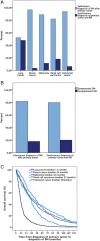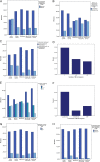Descriptive statistical analysis of a real life cohort of 2419 patients with brain metastases of solid cancers
- PMID: 27843591
- PMCID: PMC5070252
- DOI: 10.1136/esmoopen-2015-000024
Descriptive statistical analysis of a real life cohort of 2419 patients with brain metastases of solid cancers
Abstract
Aim: We provide a descriptive statistical analysis of baseline characteristics and the clinical course of a large real-life cohort of brain metastases (BM) patients.
Methods: We performed a retrospective chart review for patients treated for BM of solid cancers at the Medical University of Vienna between 1990 and 2011.
Results: We identified a total of 2419 BM patients (50.5% male, 49.5% female, median age 59 years). The primary tumour was lung cancer in 43.2%, breast cancer in 15.7%, melanoma in 16.4%, renal cell carcinoma in 9.1%, colorectal cancer in 9.3% and unknown in 1.4% of cases. Rare tumour types associated with BM included genitourinary cancers (4.1%), sarcomas (0.7%). gastro-oesophageal cancer (0.6%) and head and neck cancers (0.2%). 48.7% of patients presented with a singular BM, 27.7% with 2-3 and 23.5% with >3 BM. Time from primary tumour to BM diagnosis was shortest in lung cancer (median 11 months; range 1-162) and longest in breast cancer (median 44 months; 1-443; p<0.001). Multiple BM were most frequent in breast cancer (30.6%) and least frequent in colorectal cancer (8.5%; p<0.001). Patients with breast cancer had the longest median overall survival times (8 months), followed by patients with lung cancer (7 months), renal cell carcinoma (7 months), melanoma (5 months) and colorectal cancer (4 months; p<0.001; log rank test). Recursive partitioning analysis and graded prognostic assessment scores showed significant correlation with overall survival (both p<0.001, log rank test). Evaluation of the disease status in the past 2 months prior to patient death showed intracranial progression in 35.9%, extracranial progression in 27.5% and combined extracranial and intracranial progression in 36.6% of patients.
Conclusions: Our data highlight the heterogeneity in presentation and clinical course of BM patients in the everyday clinical setting and may be useful for rational planning of clinical studies.
Keywords: brain metastases; descriptive analysis; disease status in end of life period; prognosis.
Conflict of interest statement
Conflicts of Interest: None declared.
Figures




References
LinkOut - more resources
Full Text Sources
Other Literature Sources
Miscellaneous

